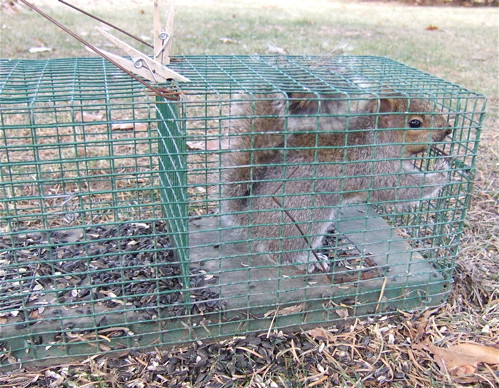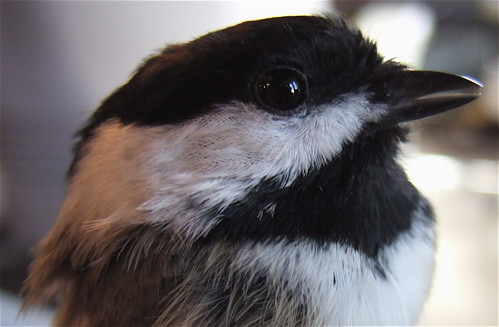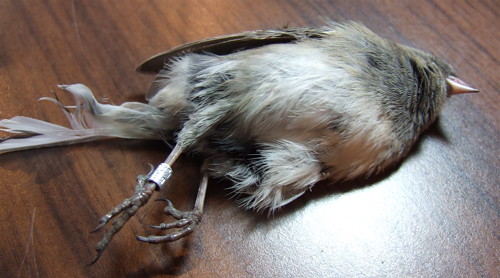A cool front has moved in and it's finally starting to feel like autumn. It was another busy morning banding birds at Carpenter Nature Center--when I arrived, they had taken 15 birds out of one net! Incidentally, CNC is selling apples from the orchard (Zestars) and have some you pick raspberries (as if the birding were reason enough to visit).
I'm finally to the point where I'm an actual helper, really banding the birds and taking them out of the nets. For a long time, I just documented the events, but I'm finally to the point where I can be of some real use. I felt like joined the big kid table somewhat because I got to band a small empid flycatcher. They can be agony to id in the fall--even in hand six inches from your face. But with some help it was determined that the above bird was a willow flycatcher. This flycatcher was so young, that as we were taking it out of the net, it started making whiny calls and fluttering its wings--food begging behavior (kind of an odd little avian Stockholm syndrome there).
A surprise for me was a cedar waxwing in the nets. Such a pretty bird, almost like a female cardinal with a lot of make up on...which I think I've probably stated more than once in the blog...an probably will again.
Someone's bringin' waxy back! Check out the waxy appendages on those secondary flight feathers. For those curious, BNA says that the red bits are colored by astaxanthin, a carotenoid pigment and increase in size and number with the waxwing's age. If they don't have any, they are likely immature waxwings.
Later in the morning, someone from the Wildlife Rehabilitation Center came by with about 23 young mallards that had been raised in the waterfowl nursery. They are going to be released in a few days so we put bands on them. Interesting to note: if you hold a duck in just the right way, it can act as a very stinky squirt gun when it poops--just so you know.
The cool sunny day was so gorgeous, that I couldn't leave when we finished banding so I went out to take some photos. The prairie is glowing with late summer flowers. Above is a young song sparrow with its back to the wind. Take a look at the tail--feathers are still growing in.
A field sparrow popped up on some sumac, not too far from the song sparrow. As I was watching this bird, a second field sparrow flew in:
This one was carrying food. Curious, it chipped nervously while I walked the path and took photos. Eventually, it ducked down into the grasses and I could hear faint begging calls. Seriously? You guys went for another brood in Minnesota? It's early September, what's going to happen next week when the young fledge? Will you say, "Great, now that you've mastered flying five feet, you need to know that in the next couple of weeks, we're gonna fly a few thousand miles south...at night." I wonder if any studies have been done on migratory birds and multiple broods? Do birds hatched earlier in the summer that have had more time to master flight and catching food fare better than birds hatched late?
Another interesting thing about the second bird--it's wearing a band, it's been in the CNC nets at some point. Oh, and we had a very interesting retrap today--a female goldfinch who was originally banded SEVEN years ago. Incredible!
That concludes our regularly scheduled update of brown birds.
















